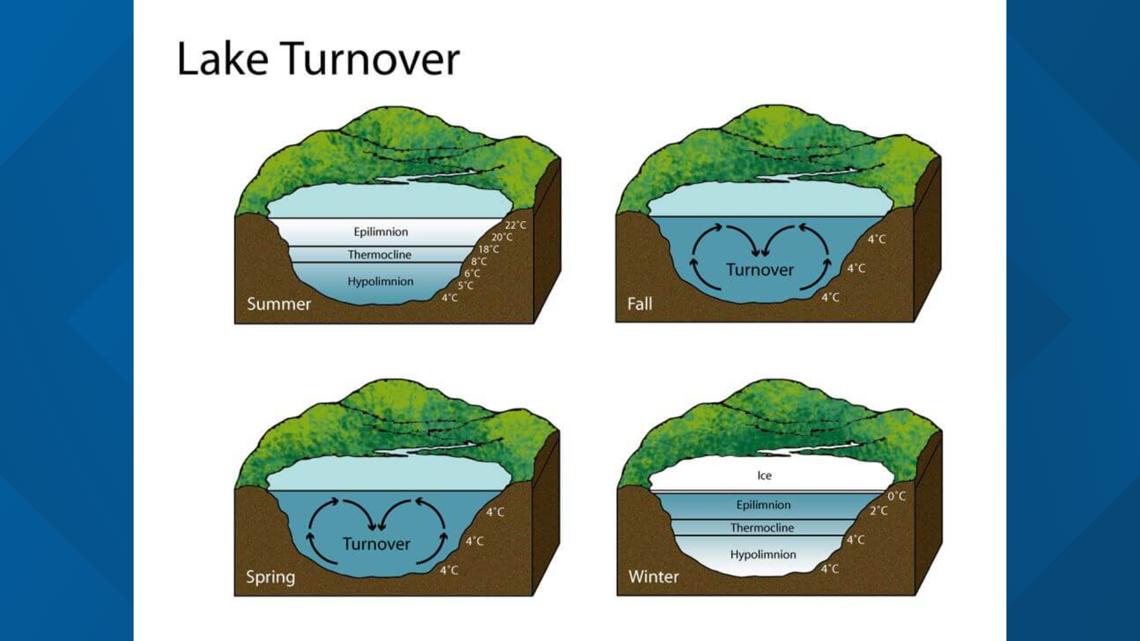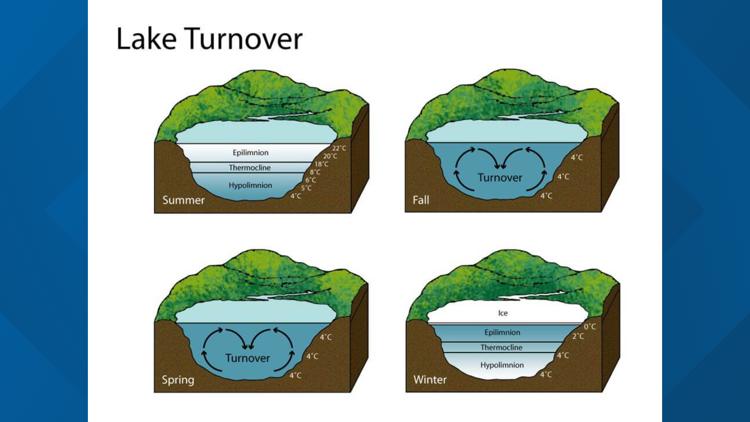TEMPLE, Texas — We love our lakes here in Central Texas, and in this Weather Impact 101, I will inform you about what Lake Turnover is and talk about some of the things we may see here in Central Texas because of it!
What is Lake Turnover?
Lake Turnover is a natural phenomenon that occurs when a lake's water mixes due to sudden changes in temperature. It's a seasonal process that typically happens in lakes that are deeper than 20 feet, and it's important to the health of aquatic life. This phenomenon is also sometimes called “lake destratification” and doesn’t just happen in lakes but also ponds and other reservoirs.
Have you ever driven across Belton Lake’s dam and smelled rotton eggs? Let me tell you why.
There are seasonal differences that could affect us and the things we see right here at home. During the summer, the sun heats the surface layer of the lake, called the epilimnion, making it warmer and less dense than the deeper hypolimnion, which is colder and denser. (By the way, the eplimnion on lakes Belton and Stillhouse extends from the surface down to around 34 feet or so.) The thermocline, a thin layer of water where the temperature changes rapidly, separates the two layers and prevents them from mixing. Here in Central Texas, temperature layers in the water remain constant during the hot days of summer and early fall. Dangerous algae can form and because our bodies of water aren’t mixing, we oftentimes see it present in summer, not going down until later in fall.


In fall, when the air cools, the epilimnion cools until it's the same density as the hypolimnion, and the two layers can "intermingle" with the help of the wind. This is called fall turnover. Oxygen from the surface mixes with the bottom, while nutrients trapped near the bottom are free to mix throughout the lake. this is why, sometimes, in the spring and fall the lake can smell unpleasant. We see that right here in Central Texas. Decomposing organic materials are churned up from the bottom of the lake, bringing a signature sign of lake turnover that you can see.
In spring, the opposite happens, with the air warming the surface water and the bottom cooling, allowing the layers to mix again. This is called spring turnover. At several times of year, this mixing process can affect aquatic life in a positive or negative way. When water mixes, there can be a depletion of oxygen which can cause major fish kills. The opposite can also happen, where fish and other wildlife thrive because of mixing and an uptick in oxygen availability. Mixing is something that fisherman and biologists right here in Central Texas know very well.
According to the Brazos River Authority, we see turnover in March or April. Both then and in fall, there will be a few days that are really bad for fishing, followed by a frenzy. Tracking incoming weather systems and changing conditions can help you plan your fishing excursion or other water related activity. There can be an odor when mixing occurs at these times as well, which can even be tasted in your drinking water.
Want to hear more about features of Central Texas and how they may affect you? Don’t forget to check out all of our other weather related content on 6+, YouTube, kcentv.com and of course, on Texas Today or News 5, 6, and 10.
More Weather Impact 101:


